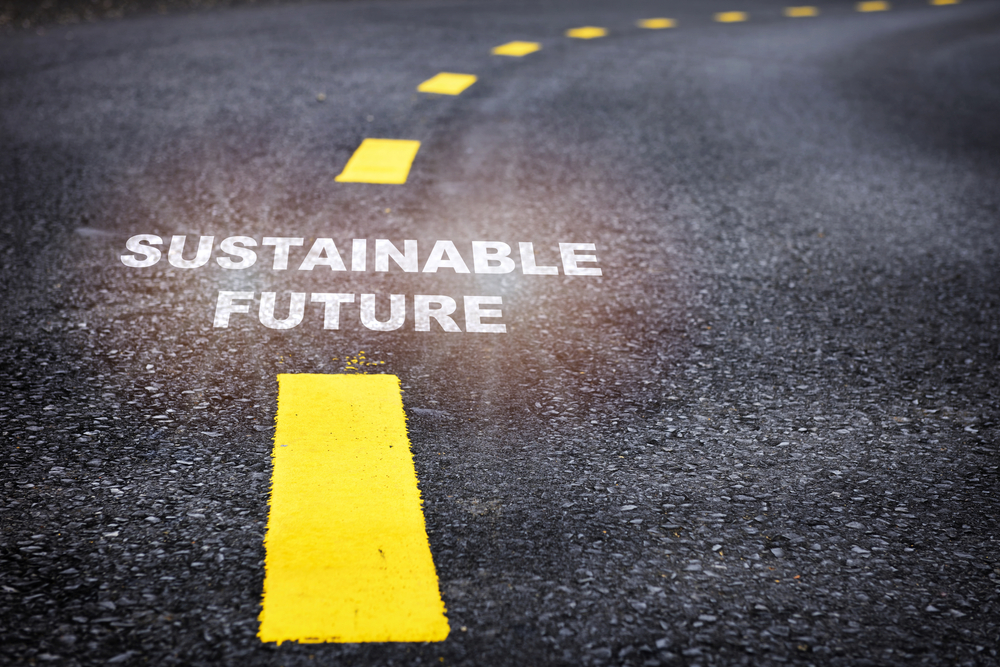Could you please share with us your journey as a sustainability advocate?
My job, as you know, didn’t exist 18 years ago. It’s quite a journey. I was initially in the hospitality industry, overseeing hotel business and product development and managing franchises. During this time, I witnessed a shift in consumer preferences towards healthier and more sustainable lifestyles. This prompted me to incorporate sustainable elements and wellness features into hotel designs.
One pivotal moment was when my son urged me to watch Al Gore’s climate change documentary. After seeing it, I realized the significance of sustainability for every company, including ours. I approached our chairman, who was soon to become the CEO, and insisted he watch the movie. He did and became equally concerned.
We were breaking off from a larger conglomerate, and he initially hesitated to start something new focused on sustainability. However, I persisted, emphasizing the importance of sustainability in our industry. Eventually, he appointed me to lead the initiative despite limited resources.
I formed a committee with colleagues from different parts of the company and developed a strategic plan together. With determination and support, we became leaders in sustainability within the hospitality industry. We created software solutions and collaborated with organizations like Schneider Electric, leading to innovations such as Resource Advisor.
I also engaged with policymakers and industry associations. I even helped establish an ESG committee with the World Travel and Tourism Council, contributing to the development of guidelines for ESG practices.
As our sustainability efforts gained momentum and recognition, I took on additional responsibilities, including philanthropy and corporate social responsibility. I started presenting to the board of directors, and our positive impact on investors further solidified the importance of our sustainability initiatives. That’s how my journey began, and I’ve been dedicated to it ever since.
What is Kyndryl’s sustainability strategy and its key pillars?
I have been with Kyndryl for two years now. My boss, Una, told me that the board of directors had emphasized the need for a strong focus on sustainability. Consequently, they decided to bring in someone with expertise in this area, which led to my hiring to establish the sustainability programme.
During the initial 18 months, our primary objective was to set clear boundaries and assess all greenhouse gas emissions across our global presence. Operating in 64 countries with 240 data centers and 80,000 employees, we faced a considerable challenge. However, we tackled this with a small cross-functional team.
In developing our programme, my strategy was always to plan with the end goal in mind. I conducted my own gap analysis to understand the regulatory requirements we would need to meet, particularly considering our presence in Europe, where compliance with the CSRD was imminent.
I also researched our investors to identify which ones had a significant ESG investment focus. Simultaneously, I analyzed our competitive landscape, realizing the need to establish our baseline promptly. This became our first pillar: developing a strategy around climate change and our environmental impact.
To achieve this, we quantified our global footprint using the greenhouse gas protocol, collaborating with experts from a company with which I had a long-standing partnership. Additionally, our internal team played a crucial role, involving various departments such as real estate, human resources, legal, and finance. This collaboration was essential to align our sustainability efforts with our financial model and de-couple carbon from our growth. We’ve collaborated closely with our Chief Operating Officer, who serves as our executive sponsor to gain a deep understanding of our strategic direction.
The second pillar revolves around risk management and enhancing our environmental performance. A significant aspect of this pillar involves conducting assurance on our baseline data. This step was crucial not only to ensure our spin-off as a distinct company but also to provide investors and regulatory bodies with validated external information. We also committed to obtaining ISO certifications, specifically ISO 14001 and 50001.
In addition, we’ve undertaken the commitment to align with science-based targets, which encompasses risk management. Furthermore, our third pillar focuses on becoming the preferred choice for both customers and employees. Achieving this goal necessitates collaboration with our dedicated workforce, making it an integral part of our journey.
We introduced a comprehensive employee training program aimed at achieving net-zero emissions. We have a Green Guild consisting of over 350 dedicated individuals responsible for developing sustainable solutions for our customers. We do carbon literacy courses, so education is key to our sustainability journey.
On the customer front, we’ve seen significant growth in RFPs. In fact, in just one year, we’ve witnessed a remarkable increase of over 200%. This surge is driven by our customers’ growing regulatory requirements and their keen interest in understanding our sustainability efforts. Additionally, we’ve collaborated closely with our customers to provide tailored solutions, as I previously mentioned.
The fourth pillar centers around gaining a competitive advantage and expanding our market presence. This has been a significant focus of my role here. In addition to engaging with customers locally, I’ve been travelling to places like Australia and Europe to explore partnership opportunities.
We’ve initiated discussions with major players in the industry, including hyperscalers like Microsoft and AWS, to co-create scalable sustainability solutions. It’s worth noting that the sustainability market is going to be around $32 billion by 2032, and we’re actively working to tap into this growing sector.
This entire transformation extends beyond just clean tech; it encompasses all aspects needed to achieve our goals. We’ve seamlessly integrated it with our existing programs. You can find detailed information about our journey in our corporate citizenship report.
Moreover, we’ve taken extra steps to align with the expectations of investors who now closely scrutinize Environmental, Social, and Governance (ESG) performance. Organizations like ISS, MSCI, and others evaluate companies based on these criteria. They also seek specific disclosures, such as the Task Force on Climate-related Financial Disclosures (TCFD), Sustainability Accounting Standards Board (SASB), and the Carbon Disclosure Project (CDP). I’m pleased to share that our report encompasses all these key data points.
How do you perceive sustainability initiatives in this region?
I’ve been pleasantly surprised by the level of commitment in this region. Having been involved in this field for many years, I know that to drive real change, you need to bring everyone to the table. It’s not just about companies in clean energy; it’s about manufacturing, retail, banking, oil – every sector needs to transition. Additionally, the concept of joint ventures with technology partners has added an exciting dimension, enabling us to work collaboratively toward our shared goals.
We are actively engaged in this market, collaborating with our customers to showcase precisely how to execute these strategies using technology. It’s about turning these ideas into tangible realities.
When it comes to commitment, I’ve had the privilege of participating in various panel discussions at COP28, where we delved into the practical use of AI to implement solutions and harness the power of data. Data, as I often emphasize, is the key player in this field.
In fact, we’ve launched a green parameter to help streamline information for organisations striving to meet their targets and goals. From my perspective, the real litmus test lies in the actual implementation of these projects. It’s where the rubber truly meets the road, and it’s here that we can make a substantial impact.










Discussion about this post